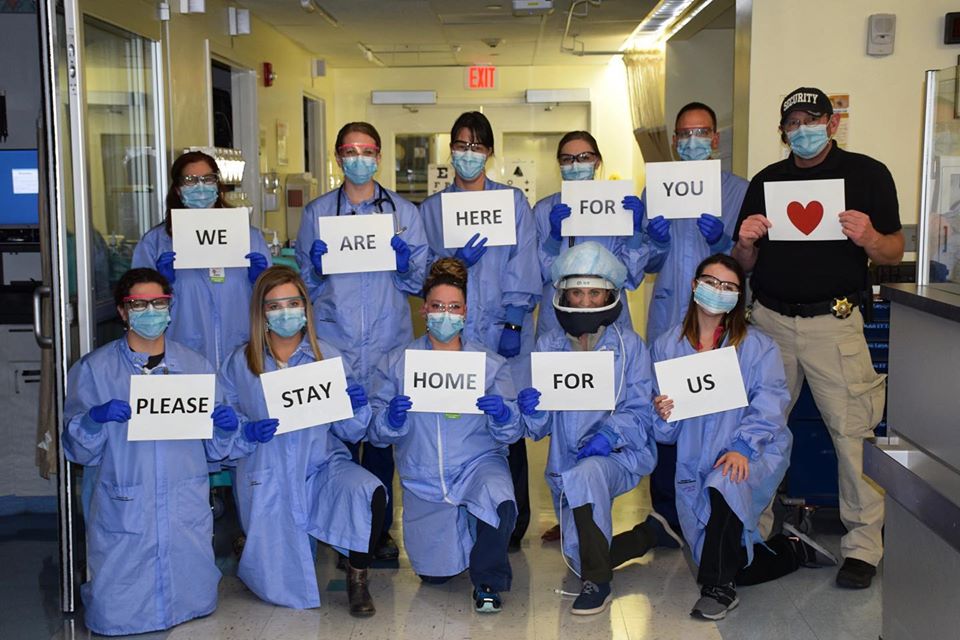Oregonians have stayed home and saved lives. By following Governor Brown’s social distancing executive orders, Oregonians have prevented more than 70,000 COVID-19 infections and 1,500 hospitalizations. Yet, containing this global pandemic here at home has changed the way Oregonians live and do business across the state. Economic and social
hardships also take a toll. Oregonians flattened the curve. Now we can consider how we safely reopen.
Oregon will use a careful, step-by-step process to safely reopen our state based on clear public health criteria and signs our health care system is able to respond to a spike in new infections. State and local officials will expand testing, case monitoring and contact tracing to protect Oregonians from new infections. If cases rise in spite of these measures, they will be
ready to apply additional strategies, including reapplying social distancing measures, to stop the spread of COVID-19 cases throughout our state.
Oregon will not be able to reopen in a way that protects the health of
all Oregonians without these three signs:
- We must see fewer Oregonians getting sick from COVID-19.
• We will do this by comparing the state-wide percentage of Emergency Department (ED) visits for the flu or flu-like illness (ILI) before COVID-19 impacted our community to the percentage of ED visits for the flu or COVID-like illness (CLI) after COVID-19 began.
• The off-season for the flu in Oregon is May through September.
Normally, 0.7% of Oregonians will go to the Emergency Department for the flu or flu-like symptoms during the off-season. This percentage can be as low as 0.4% of the population and as high as 1.4% of the population.
For contrast, the percentage of ED visits for the flu or flu-like symptoms in our neighboring states (Alaska, Idaho, Oregon and Washington) starts at 1.5% of the population during the off-season.
If our normal percentage of ED visits for the flu or flu-like symptoms
during the off-season goes above 1.5%, we will need to re-examine
our plans for reinstating COVID-19 protections for the entire state.
This percentage will be changed when flu season traditionally starts
in October. - We must see fewer hospitalizations of people with severe symptoms
from COVID-19.
• We will look for a decline of people with COVID-19 who are admitted to the hospital and will need to see the numbers continue to decrease over time. In regions around our state with fewer than five severe cases in the last 28 days, we do not need to see this same degree of decline. - We must have the resources to carefully investigate COVID-19 and
where and how it is impacting our communities state-wide.
• We will need to have the tools and the workforce to identify Oregonians who newly became sick with COVID-19 and quickly connect with anyone the sick person has encountered in order to stop the spread of the virus.
Below are three signs that will help us know that we need to stop, watch and redirect our efforts statewide or in specific communities in order to protect the health and safety of Oregonians. If one or more of these signs happens, we will need to consider putting some of our protections back in place in order prevent the spread of COVID-19 in our communities.
Signs to stop, watch and redirect: - Evidence of an inability to use tools and resources to actively monitor to find and investigate most COVID-19 cases:
• As measured by the number of new COVID-19 positive persons being greater than the public health workforce needed to quickly identify and follow up with the newly ill persons.
• As measured by multiple new COVID-19 positive persons (greater than 30%) who cannot be traced to existing persons with the virus. - Evidence of more people getting sick with COVID-19 in Oregon:
• As measured by a 5% or greater increase in new cases over seven days.
• As measured by an increase in COVID-19 positive test results over a period of seven days. - Evidence of more people experiencing severe health complications from COVID-19 requiring hospitalization in Oregon:
• As measured by the number of new COVID-19 hospital admissions steadily rising over a period of seven days.
